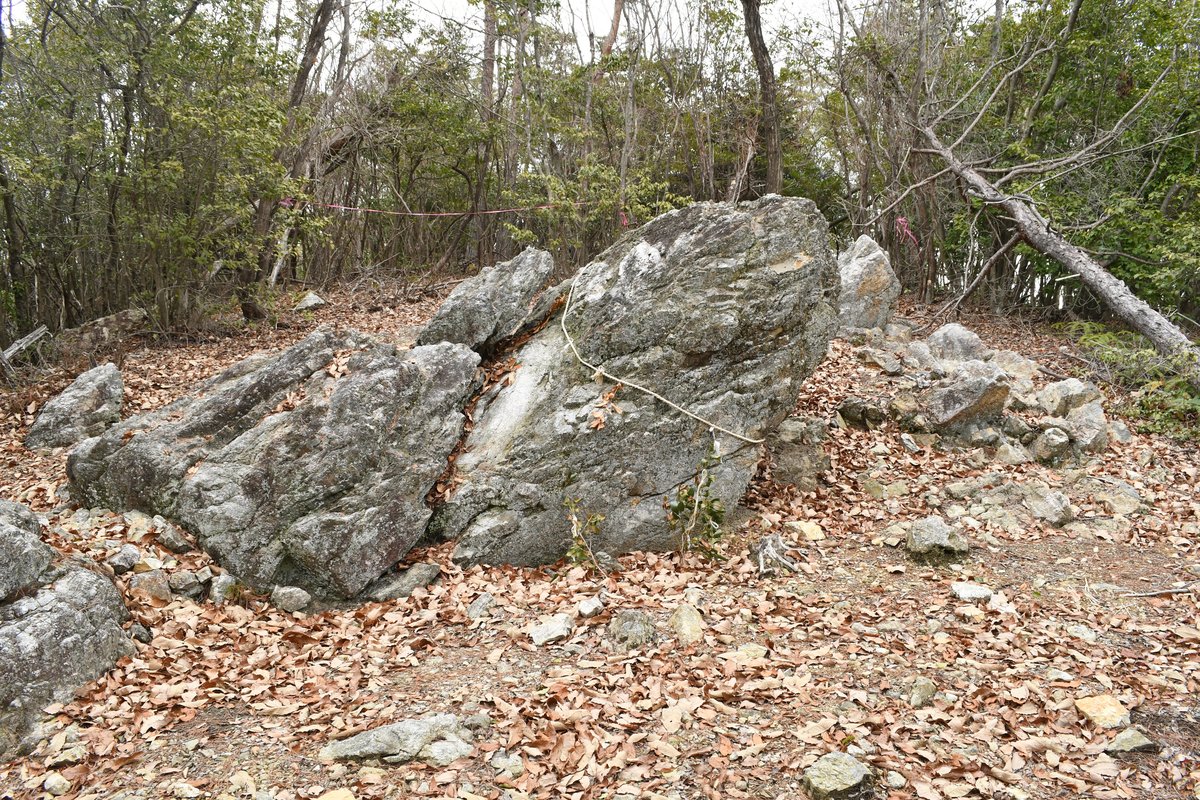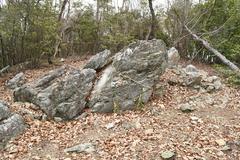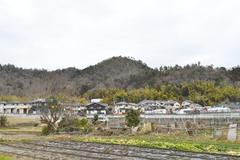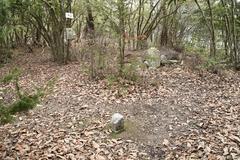
Kamigamo Shrine Kyoto: Visiting Hours, Tickets, and Historical Site Guide
Date: 15/06/2025
Introduction to Kamigamo Shrine and Its Significance
Kamigamo Shrine, officially named Kamo-wakeikazuchi Shrine (賀茂別雷神社), stands as one of Kyoto’s oldest and most prestigious Shinto sanctuaries. Founded in 678 CE during the Asuka period, the shrine graces the northern bank of the Kamo River and has been a center of continuous religious practice for over 1,300 years. As a UNESCO World Heritage Site, Kamigamo Shrine represents the confluence of spiritual devotion, historical legacy, and cultural artistry (Wikipedia; Nippon.com).
Traditionally overseen by the Kamo clan, the shrine honors Kamo Wakeikazuchi no Ōkami, a thunder deity believed to have descended from Mount Kōyama. Kamigamo Shrine’s role as a spiritual guardian of Kyoto was solidified when Kyoto became Japan’s capital in 794 CE, protecting the imperial palace and city from misfortune (Nippon.com). Its architecture, including the celebrated tatezuna sand mounds and National Treasure sanctuaries, reflects a harmonious integration of ritual symbolism, natural beauty, and expert craftsmanship (Kamigamo Jinja Grounds; Discover Kyoto).
The shrine remains vibrant with cultural events such as the famed Aoi Matsuri on May 15 and unique traditions like the Crow Sumo ceremony and monthly handicraft markets, offering visitors immersive encounters with living Japanese heritage (Japan365days; Bring-You). With daily free admission, convenient transport links, and accessible grounds, Kamigamo Shrine welcomes all, whether you seek spiritual reflection, architectural wonder, or cultural festivity (Kyoto Kinkaku; Kyoto Travel). Detailed guides, English-language tours, and seasonal event information ensure a rewarding visit to this essential Kyoto destination (Kamigamo Jinja Grounds; Japan Experience).
Table of Contents
- Origins and Early History
- Role in Imperial and National History
- Religious and Cultural Significance
- UNESCO World Heritage Status
- Visiting Kamigamo Shrine: Essential Information
- Shrine Architecture & Grounds
- Festivals and Events
- Nearby Historical Sites
- Frequently Asked Questions (FAQ)
- Visitor Experience & Tips
- References
Origins and Early History
Kamigamo Shrine (上賀茂神社, Kamigamo Jinja) is one of Japan’s oldest Shinto sanctuaries, established in 678 CE on the banks of the Kamo River. The Kamo clan, hereditary priests, have maintained the site, venerating Kamo Wakeikazuchi no Ōkami, the thunder deity believed to have descended upon Mount Kōyama behind the shrine (Wikipedia; Nippon.com). The shrine’s sacred landscape—its river, forests, and mountain backdrop—has been integral to its spiritual identity since its inception.
Role in Imperial and National History
Kamigamo Shrine’s prominence surged when Kyoto became Japan’s capital in 794 CE. It was revered as one of the city’s principal spiritual protectors, believed to shield the imperial palace from calamity (Nippon.com). In 965, Emperor Murakami initiated imperial messenger rituals at the shrine, cementing its central role in national religious affairs (Wikipedia). Throughout the Heian period, Kamigamo and Shimogamo shrines served as the chief shrines (ichinomiya) of Yamashiro Province. During the Meiji era (1871–1946), Kamigamo Shrine attained the prestigious Kanpei-taisha status, marking it as one of the highest-ranked government-supported shrines (Wikipedia).
Religious and Cultural Significance
Deity and Symbolism
Kamigamo Shrine is dedicated to Kamo Wakeikazuchi no Ōkami, the kami of thunder and lightning (Nippon.com). Historically, the shrine was believed to protect against natural disasters, attracting samurai and warriors seeking victory. Today, it is a popular site for those in electrical and IT industries to pray for success.
Sacred Geography and Purification
The shrine’s setting at the meeting of the Omonoi and Mitarashi Rivers—merging into Nara no Ogawa stream—embodies purification, a core Shinto value. Crossing the bridges into the shrine precincts is a symbolic act of spiritual cleansing. Visitors perform ritual purification at the temizuya, drawing on Kamiyama-yusui spring water, famous for its clarity and used for brewing coffee on the grounds (Bring-You).
Architectural Heritage
Kamigamo Shrine’s architecture features natural wood complemented by vermilion-painted gates and fences, nestled amid forest and lawn (Discover Kyoto). The main sanctuary (honden), rebuilt in 1863, and the worship hall (haiden), reconstructed in 1628–29, are National Treasures of Japan, as are several other structures. The shrine complex boasts 41 Important Cultural Properties (Nippon.com). Of special note are the tatezuna—two conical sand mounds in front of the Hosodono Hall—representing Mount Kōyama and serving to purify the grounds (Discover Kyoto).
Festivals and Rituals
Kamigamo Shrine hosts the Aoi Matsuri (Hollyhock Festival) each May 15, one of Kyoto’s three grand festivals, featuring an elaborate Heian-era procession from the Imperial Palace to the shrine (Bring-You). Other important events include the nagoshi no ōharae (summer purification) and the children’s Crow Sumo (Karasu-zumo), reflecting the shrine’s deep ritual calendar (Bring-You).
Community and Living Traditions
The shrine’s hereditary priesthood and historic neighborhood preserve centuries-old traditions (Wikipedia). The monthly handmade market and Shinto-style weddings illustrate Kamigamo Shrine’s vital role in both spiritual and local community life (Bring-You).
UNESCO World Heritage Status
Kamigamo Shrine was recognized as part of the Historic Monuments of Ancient Kyoto by UNESCO in 1994, highlighting its universal value in religious, architectural, and cultural history (Nippon.com). Its preservation includes periodic rebuilding ceremonies (shikinen sengu) to maintain both structures and traditions (Bring-You).
Visiting Kamigamo Shrine: Essential Information
Opening Hours
- Shrine grounds: 6:00 AM to 5:00 PM (may vary seasonally; early mornings are especially tranquil)
- Reception/Visitor Center: 8:30 AM to 5:00 PM
Admission and Tickets
- General admission: Free
- Special events or exhibitions: May require tickets; adults ¥800, children (6–12) ¥400 during limited-access events (Kyoto Travel)
Getting There
- By bus: Kyoto City Bus routes 4, 17, and 205 stop near the shrine.
- By subway: Karasuma Line to Kitaōji Station, then short bus or taxi ride.
- Parking: Limited; public transport is recommended (Kyoto Travel).
Accessibility
- Most of the grounds are flat and wheelchair accessible.
- Accessible restrooms are available.
- Some gravel paths may require assistance.
Guided Tours and Photography Tips
- English-language tours are offered seasonally (inquire at the visitor center or check the official website).
- Photography is permitted except in restricted areas; early morning and late afternoon offer the best light.
Nearby Attractions
- Shimogamo Shrine
- Kyoto Botanical Gardens
- Kamogawa Park walking paths
Shrine Architecture & Grounds
Main Sanctuary (Honden) & Temporary Sanctuary (Gonden)
The shrine’s spiritual center comprises the Honden (Main Sanctuary) and Gonden (Temporary Sanctuary), both built in the nagare-zukuri style with distinctive sweeping eaves (Kamigamo Jinja Grounds). The Honden enshrines Kamo Wakeikazuchi no Ōkami; the Gonden serves during repairs or purification rituals. Both are National Treasures (Kyoto To Do).
Romon Gate & Tamabashi Bridge
The Romon Gate, painted vivid vermilion, marks the formal entrance to the inner precincts and is flanked by the arched Tamabashi Bridge over the Omonoi Stream. Only priests use the Tamabashi; visitors cross via adjacent bridges (Kamigamo Jinja Grounds).
Hosodono Hall & Tatesuna Sand Cones
Hosodono Hall is fronted by the twin tatezuna sand mounds, each topped with pine needles and representing the sacred Mount Kōyama, central to the shrine’s cosmology (Kamigamo Jinja Grounds).
Subsidiary and Auxiliary Shrines
- Katayama Miko Jinja: Honors the deity’s mother, venerated for blessings in love and family (Kamigamo Jinja Grounds).
- Shingu Jinja (Kifune Jinja): Dedicated to the rain deity, offers prayer services and kagura dances.
- Ota Jinja: Noted for its iris gardens.
Shokei’en Garden
Designed in 1960, Shokei’en Garden features natural streams, irises, autumn maples, and a 300-year-old tree believed to bring family happiness (Kamigamo Jinja Grounds).
Sacred Horse (Shinme) Stable
Visitors can meet the sacred horse on Sundays and holidays from 9:30 AM to 3:00 PM (Kamigamo Jinja Grounds).
Layout of the Shrine Grounds
The grounds are a blend of sacred buildings, landscaped gardens, and streams, with a central axis from the Romon Gate to the Honden (Kamigamo Jinja Grounds).
Festivals and Events
Aoi Matsuri (Hollyhock Festival)
Held May 15, this is one of Kyoto’s three grandest festivals. It features a costumed procession from the Imperial Palace to Kamigamo and Shimogamo Shrines, with participants wearing Heian-period attire and hollyhock decorations (Japan365days; Japan Experience).
Visitor tips:
- Arrive early for good viewing spots.
- Reserved seating along the route is available for purchase.
- Use public transport due to road closures.
Crow Sumo (Karasu-zumo)
On September 9, priests imitate crow calls and gestures, followed by children’s sumo matches, reflecting ancient Shinto traditions (Japan Experience).
Kamigamo Shrine Handicraft Market
Held on the fourth Sunday each month, featuring over 250 stalls of crafts, foods, and antiques (Inside Kyoto; Kyoto Travel).
Annual Rituals and Community Events
- Shikinen Sengu: Ritual rebuilding every 21 years.
- Imperial Messenger Ceremony: Annual ritual linked to the Kamo Matsuri.
- Weddings and Blessings: Traditional ceremonies throughout the year (Inside Kyoto).
- Other Rituals: Purification, rice planting, and occasional kemari (ancient football) demonstrations.
Visitor Experience & Practical Tips
Arrival and Atmosphere
The approach to Kamigamo Shrine is marked by spacious lawns and a tree-lined avenue, offering respite from city bustle (Kyoto Kinkaku). The grounds are ideal for quiet reflection, especially along the Myojin River.
Navigating & Highlights
- Explore the main sanctuary, tatezuna mounds, and gardens.
- Enjoy seasonal cherry blossoms, autumn foliage, and festival days (Kanpai Japan; Traditional Kyoto).
Local Flavors
Try yakimochi (grilled rice cakes) and suguki pickles at festival stalls (Kyoto Kinkaku).
Etiquette
Purify hands at the temizuya, and respect ongoing ceremonies during your visit.
Nearby Historical Sites
- Kamigamo Traditional Buildings Preservation District: Historic priestly residences and farmhouses along the Myojin River (Kyoto Kinkaku).
- Ota Shrine: Noted for iris gardens and ancient camphor tree (Kyoto Kinkaku).
- Kyoto Botanical Gardens: Japan’s oldest public garden (Kyoto Kinkaku).
- Kamogawa Park: Riverside walking and cycling (Kyoto Localized).
- Local Tea Houses: Experience tea ceremonies and traditional sweets (Kyoto Localized).
Frequently Asked Questions (FAQ)
Q: What are Kamigamo Shrine’s visiting hours?
A: 6:00 AM to 5:00 PM daily; inner precincts may have limited hours.
Q: Is there an admission fee?
A: General entry is free. Special events may require tickets.
Q: Is the shrine wheelchair accessible?
A: Yes, most areas are accessible, with some paths requiring assistance.
Q: How do I get there from Kyoto Station?
A: Take City Bus No. 4, 17, or 205 directly to the shrine.
Q: Are guided tours available?
A: English tours are available seasonally; check with the visitor center.
Q: What are the best times to visit?
A: Early mornings, weekdays, and during seasonal highlights (spring blossoms, autumn leaves, festivals).
Summary and Visitor Tips
Kamigamo Shrine is a living testament to Japan’s spiritual and cultural legacy, offering centuries-old rituals, architectural treasures, and vibrant festivals (Wikipedia; Nippon.com). Its welcoming grounds, free admission, and accessible facilities make it a must-see for any Kyoto itinerary. Combine your visit with nearby historic sites and markets for a fuller experience of Kyoto’s Kita Ward.
Stay updated on events and practical information through the Kamigamo Jinja Official Site and the Kyoto City Official Travel Guide. Download the Audiala app and follow our channels for exclusive guides and tips.
References and Further Reading
- Wikipedia: Kamigamo Shrine
- Nippon.com: Kamigamo Shrine Guide
- Kamigamo Jinja Grounds
- Japan365days: Kamigamo Shrine Festivals
- Japan Experience: Kamigamo Shrine
- Kyoto Kinkaku: Kamigamo Shrine Visitor Information
- Kyoto Travel: Visiting Hours & Tickets
- Inside Kyoto: Kamigamo Shrine Market
- Discover Kyoto: Kamigamo Shrine
- Kyoto City Official Travel Guide













































































